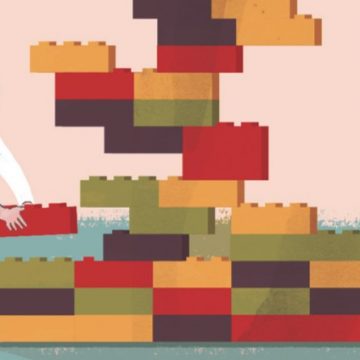On May 13, 2000, a two-year-old girl and her parents celebrated Mother’s Day at a restaurant in Walkerton, Ont. She drank the tap water and died 10 days later. At the beginning of the Walkerton Inquiry into how the town’s water became contaminated with E. coli, her parents met with Commissioner Dennis O’Connor and me as commission counsel. They brought a photo album for us to look through. It began with their daughter’s birth, and ended abruptly with her death that spring.
These are the heartbreaking moments that inspire governments to keep running inquiries. They offer a way for victims to tell their stories and can pinpoint how things went wrong. It’s no surprise that the Ontario government is conducting another inquiry right now; this time into the events of June 2012, when sections of the Algo Centre Mall’s roof in Elliot Lake came crashing down, killing two people and injuring several others.
While our work in Walkerton was successful — the inquiry led to recommendations implemented by the province — not all inquiries are as effective.
Often, no one takes action. And many are criticized for excessive cost or delay — for valid reasons. While the Walkerton Inquiry cost approximately $10 million and ran for 14 months, the Cornwall Public Inquiry into a pedophile ring in that city ran for five years and cost a reported $53 million. (Elliot Lake is expected to cost $15 million and wrap up by February.)
Despite the criticisms, this approach to justice has real merit. Inquiries help restore public confidence in the wake of a tragedy or scandal, particularly when the system appears broken and traditional institutional responses are seen as inadequate or compromised. They are ad hoc — so no bureaucracy can try to cover up past mis- takes — and usually have just a judge and an independent legal team. Inquiries can seize documents and compel testimony. Since they cannot make findings of civil or criminal liability, they are more effective than trials at putting together systemic explanations for what really happened.
Importantly, the work of inquiries is transparent. Most hearings are public, often televised. Most include public participation through submissions and public roundtables. Many take place in the affected community, which provides the legal team with direct access to concerned residents and allows everyone involved to understand the impact on the community. Dozens of lawyers and support staff come to these communities to stay, often for months on end, which helps stimulate the local — and often damaged — economy.
Public inquiries also contribute to the development of administrative law with their focus on procedural flexibility, limiting the use of traditional adversarial-type processes and incorporating processes tailored to efficient investigations, policy development and reporting. The use of panels of experts to give evidence and the use of investigative summaries have spread from inquiries into courts and tribunals.
Yes, they can be expensive, they can take too long and they can falter. However, when public inquiries work, they are uniquely able to provide a thorough assessment of systemic failures, coupled with innovative policy solutions to prevent the recurrence of scandals and tragedies. They call on national and international expertise, involve the public and contribute to legislation. They help heal wounded communities. They deal with difficult issues and hold institutions to account in a way that is simply not possible in our civil and criminal justice systems.
Public inquiries should only be used when issues are of a systemic nature. The commissioner must be given a manageable mandate, meaningful powers and an adequate budget. When they work, they really do change society for the better.
Freya Kristjanson is a partner at Cavalluzzo Shilton McIntyre Cornish LLP. She has worked on numerous inquiries and is currently serving as independent assessor for the Elliot Lake Inquiry.
Illustration by Hugh Langis


